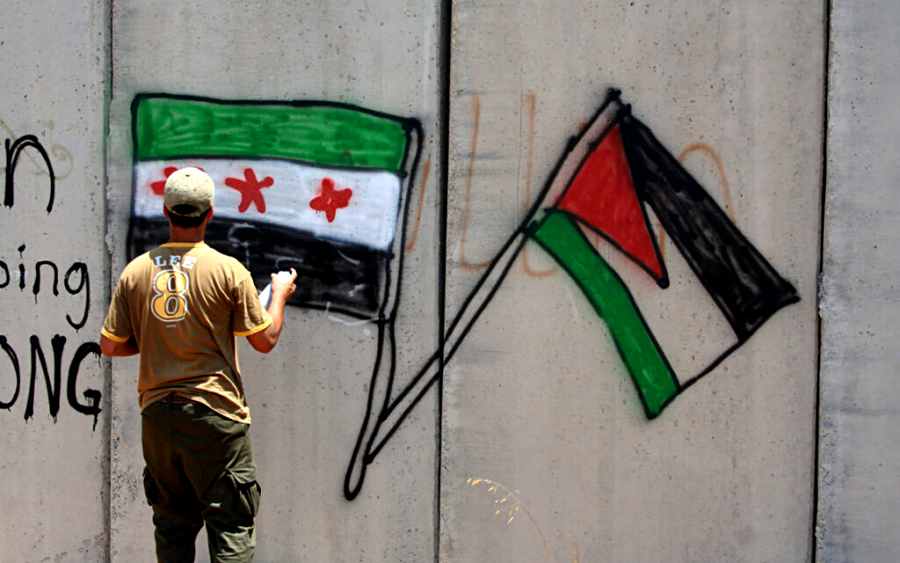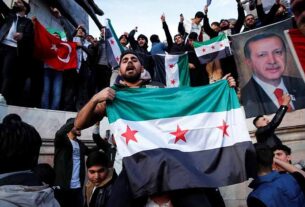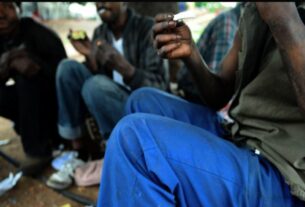Sat 13 April 2024:
The Syrian revolution has just entered its fourteenth year. The Arab Spring revolutions swept across the Arab world and broke out in Syria on 15 March, 2011. Had it not been for Russia’s intervention, the Syrian dictator Bashar Al-Assad would have been overthrown. He preferred Syria to fall into the clutches of the Russian occupation than for himself to join the tyrants Hosni Mubarak, Muammar Gaddafi and Ali Abdullah Saleh in Egypt, Libya and Yemen respectively.
Assad was not the only regional dictator fearing for his position; all the Arab kings and princes trembled with him. They all feared that the demand for freedom, dignity and democracy would inspire their own people, and they too would be overthrown. Some of them have now allied themselves with the Zionist enemy. The occupation state of Israel was also disturbed by the revolutions in neighbouring states, whose rulers guarded its borders. That is why the UAE became the epicentre of the counter-revolutions against the Arab Spring. The hope-filled Spring turned into violent autumn, especially in Syria, Libya and Yemen, terrorising protesters and those even thinking about demands for freedom, dignity and democracy.
Saudi Arabia and the UAE stood against the will of the people and supported the tyrannical rulers, even in Syria, which has witnessed the greatest Arab revolution ever. Never in history has a nation made the sacrifices that the Syrian people have made when everyone teamed up against them. The hyenas of the world mauled Syria’s wounded body, cut off what they could for themselves, and fled with their spoils, leaving Syria drowning in its people’s blood.
The Syrian revolution was abandoned by those who called themselves “friends of Syria” but instead took their share of the spoils. The Syrians should have stuck by their initial claim: “We have no one but you, O Allah” and not hand themselves over to countries that claimed to support them and supported them with money and weapons until it was clear that they were prisoners of their own fortune and forced to carry out their “friends’” orders. Such countries betrayed Syria and stopped their support, giving priority to regional interests.
I have said since the beginning of the Arab Spring that the problem of the Arab revolutions was the lack of credible Arab leadership possessing the means and characteristics that would allow it to rally the masses in managing the revolutions, ensuring their success and creating a new, fairer governance system. These revolutions had no legitimate father figure, so everyone claimed that they were that person, leading to damaging infighting.
The revolutionary spark flared and died.
The Syrian revolution began in Daraa in south-west Syria, when a number of boys wrote revolutionary slogans, heard when being chanted elsewhere, on the walls of their schools. The Assad regime went crazy; its security forces attacked Daraa and arrested the boys, all of whom were under 13 years old, and tortured them. They were electrocuted and beaten with electric cables; their fingers were cut off, as were their genitals to break their spirit of manhood and strength. The regime forgot that maleness and masculinity are two different things. Fourteen years after being exiled from Daraa, those boys are strong men defending Idlib, the only liberated area of Syrian land, against the oppression of the regime and the Russian occupation.
When the boys’ families went to the security services to ask about their children, they were insulted, humiliated and thrown out. “Forget about them and have other children,” they were told, “and if you’re unable to, the security will take over the task.”
The parents were shocked by this response, so they demonstrated against the security forces, and were joined by hundreds of people. Then thousands. The regime responded with live fire, killing dozens. Daraa rose up en masse against the Assad regime, demanding its overthrow. The regime responded to this by besieging the city, but people from neighbouring towns and villages broke the siege.
Hundreds were arrested, including Hamza Al-Khatib, 13. His body was eventually handed over to his family, and it had clear evidence of torture and the bullets he had been shot with. His neck was broken, and his body was mutilated, with his genitals cut off. Photographs were circulated on the Internet and shocked millions of Syrians. Many took to the streets in massive demonstrations, in solidarity with this child who was betrayed. The demonstrations spread from the capital, Damascus, to Aleppo, Homs, Hama and other Syrian cities. Hamza Al-Khatib became the icon of the Syrian revolution that toppled statues of the murderer Bashar Al-Assad and his father. The people tore up their pictures, trampled on them and burned them.
The security forces were unable to disperse the demonstrations despite firing volley after volley of bullets at the crowds. That’s when the army went in with its tanks and armoured vehicles. Thousands of martyrs fell. The initially peaceful protests turned into an armed revolution to defend the people of Syria.
The regime “planted” weapons in front of homes, on the streets, and in cafes to incriminate people, and they released convicted Islamists from prison in order to transform the nature of the revolution. Suddenly, the uprising turned into a “war on terrorism”; those leading the demonstrations were described as “terrorists”; and countries stood in sympathy with the murderous Assad regime.
Nothing grabs the attention and support of the West than the dog-whistle allegation of “terrorism”. The regime initially sought help from Hezbollah militias and some Shia militias in Iraq and Afghanistan in its war against its own people. When that wasn’t enough, the Quds Force of Iran’s Islamic Revolutionary Guard Corps, led by Qasem Soleimani, entered Syria and burned and destroyed entire villages, killed thousands of Syrians, and displaced thousands of Sunni Muslims. Soleimani basically turned the revolution into a Sunni-Shia war, but was unable to suppress it. It was the Russian intervention that turned the tide in Assad’s favour, with its aircraft and missiles implementing a scorched earth policy that it had used in Chechnya. The regime used chemical weapons against the Syrian people and dropped barrel bombs on their heads.
Eventually, the liberated cities began to fall one after another. The regime which had once controlled just 20 per cent of Syria now controlled about 80 per cent. The revolution was confined to Idlib, and revolutionaries from other cities flocked there after international interventions, understandings and agreements between Russia and Turkiye. However, Idlib has not yet been spared from the crimes of Bashar’s militias and the ongoing Russian raids despite such agreements.
More than two million Syrians have been martyred, and 10 million have been displaced, many from their homeland altogether.
The Syrian revolution exposed the treachery and betrayal of those closest to it, but the story is not complete; no ending has been written yet. Revolutions, like wars, have many twists and turns until the decisive hour strikes and the curtain falls. Do not be deceived by the butcher Assad remaining president. The flame of the revolution is burning in the conscience of every free Syrian, waiting for the moment for it to reignite on the ground.
The statements, views and opinions expressed in this column are solely those of the author and do not necessarily represent those of Independent Press.
______________________________________________________________
FOLLOW INDEPENDENT PRESS:
WhatsApp CHANNEL
https://whatsapp.com/channel/0029VaAtNxX8fewmiFmN7N22
![]()
TWITTER (CLICK HERE)
https://twitter.com/IpIndependent
FACEBOOK (CLICK HERE)
https://web.facebook.com/ipindependent
YOUTUBE (CLICK HERE)
https://www.youtube.com/@ipindependent
Think your friends would be interested? Share this story!






